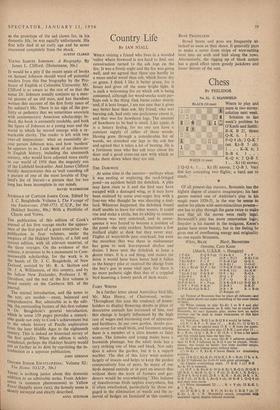FAIRY WRENS
In a further letter about Australian bird life, Mr. Max Henry, of Chatswood, writes : 'Throughout this area the tendency of house- holders to display flowering shrubs in place of decorative annuals has increased of late, and this change is largely influenced by the high rate of wages and increasing cost of apparatus and fertilisers. In our own garden, shrubs pro- vide cover for small birds, and foremost among these is a member of a class known as fairy wrens. The females and young males have a brownish plumage, but the adult male has a very striking one of blue and black. Not only does it adorn the garden, but it is a superb warbler. The diet of this fairy wren consists largely of insects and helps to keep the garden comparatively free of pests. So many of our birds depend entirely or in part on insects that without them the work of farmers and gar- deners would be overwhelming.' This balance of insectivorous birds applies everywhere, but is often overlooked, particularly by those en- gaged in the elimination of weeds and the re- moval of hedges on farmland in this country.


































 Previous page
Previous page